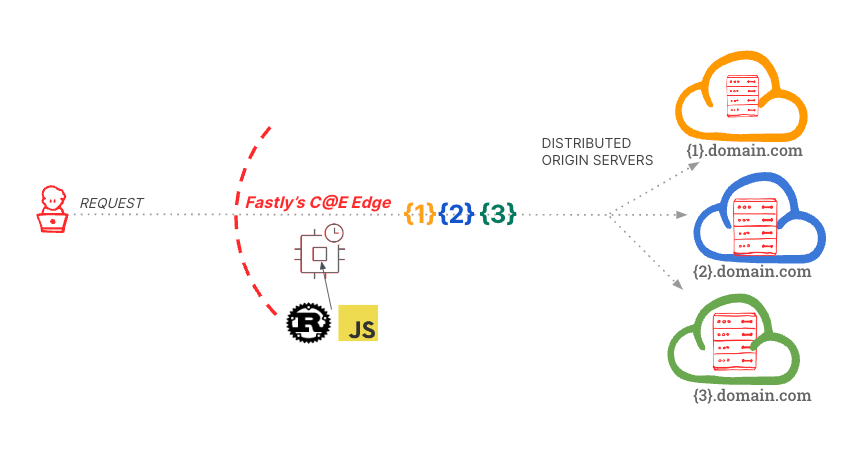Dynamic Backends help you easily scale across multiple origin backends

Product Manager, Fastly
In today’s world of hybrid and multi-cloud, our customers need additional flexibility to deploy services and content. Since Fastly front-ends these services and content for our customers, we needed to provide a way to facilitate the deployments by not requiring service configuration changes when there are changes to backend destinations or origins.
We have heard about situations from Compute customers where they do not have all of the backends configured for their own customers. Usually, this is because our customers are simply unaware of the,m or there is a need to decide the backend in real time based on certain request parameters.
For example, their customer may want a request with an ID to be directed to a backend name subdomain containing the ID. The typical (and less efficient) workaround that customers often use today would include having to make an API call to another service in the public cloud to retrieve the backend information. Another scenario is where our customer doesn’t always know the bucket name (say as in <>.s3.region-code.amazonaws.com) in advance to define a backend on a Fastly service API.
Dynamic backends support from Fastly addresses such pain points and provides our customers with a more flexible mechanism for updating the list of acceptable targets and connecting to them at runtime. Gaining the ability to easily and safely make updates and changes to a backend means it can be developed and deployed in a manner more like continuous integration and continuous deployment.
But that’s not all, there are four key reasons you’re going to want to start using Dynamic Backends as soon as you can:
Eliminate the development time and effort needed to pre-define backends with preconceived origin definitions.
Free your teams to make changes to your applications and backends without having to manage and update configurations every time a change is made.
Free yourself to consider newer origin deployment architectures that can scale and expand over time.
Reduce latency and improve performance.
Example: Switching to a backend dynamically

Dynamically specified backends can be created in Rust or JavaScript without needing to previously declare them in a UI, yet still benefit from having all the same capabilities of a pre-defined, static backend. With Dynamic Backends, Fastly customers can now use Compute to route traffic based on real-time decision criteria employed in code, and make changes to their backends without creating any downstream complications, thereby improving the overall content delivery experience.
Get started with Dynamic Backends
We’re happy to announce the general availability of Dynamic Backends.
Paid subscribers to Fastly’s Compute can get started here.